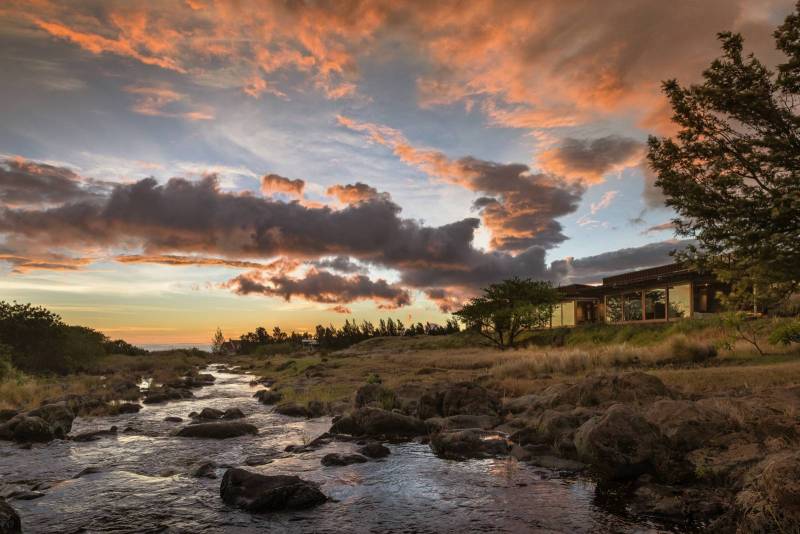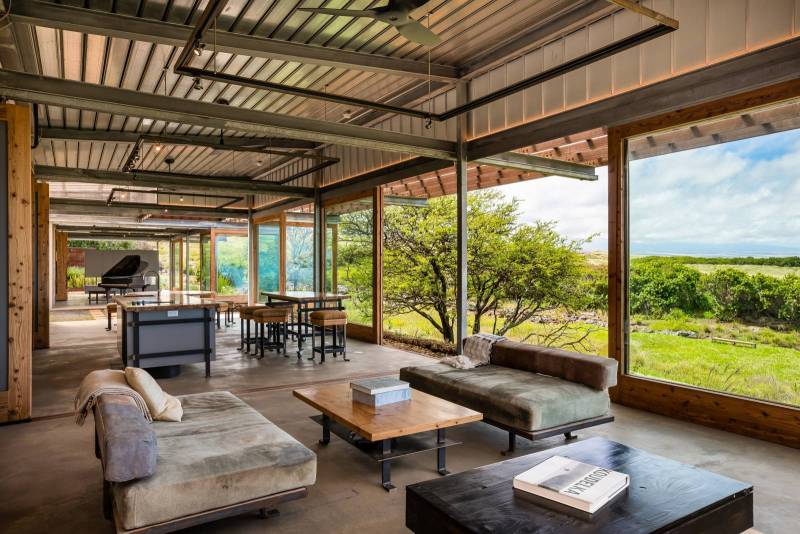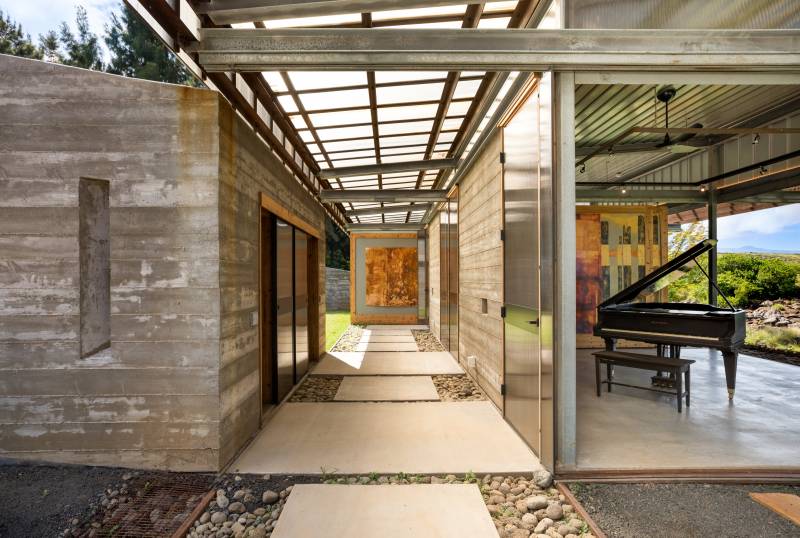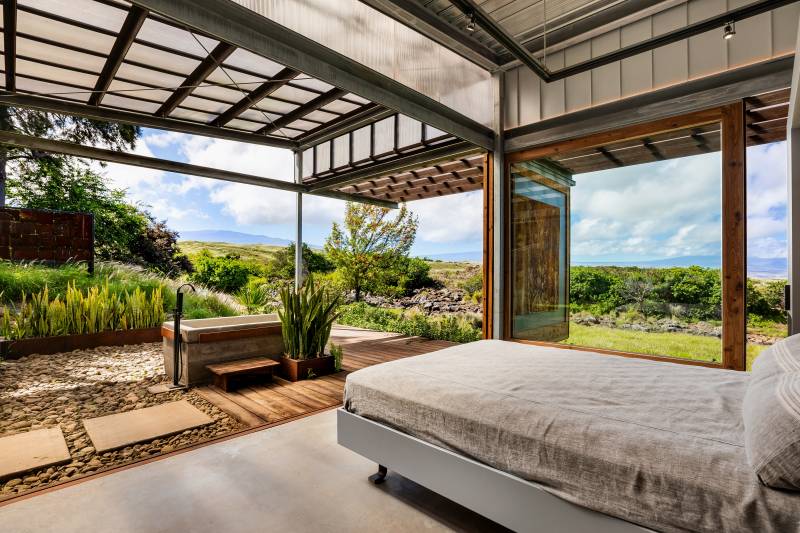Modern Architecture in Hawaii | Embracing Nature in Form & Function
There are distinctive styles of architectural design in Hawaii that reflect the history of the islands dating back to primitive times leading up to the 21st century and beyond.
The various styles through the history of Hawaii are telling of the attitudes and the spirit of its people. Architecture in Hawaii tells the story of the slow infusion of new styles from beyond its borders.

Modern architecture emerged in Hawaii during the second half of the 20th century after the United States colonized Hawaii after World War II. The designs were based upon new and innovative technologies of construction, particularly the use of glass, steel, and reinforced concrete; the idea that form should follow function; an embrace of minimalism; and a rejection of adornment. Today, Hawaii boasts unique modern designed homes with international influences; from American mid-century modern designs to Japanese inspired Wabi-sabi.
Highlighted below is Anēkona, on Hawaii Island. The project is built on the desert highlands, near the rural town of Waimea and just above the exclusive Kohala Coast resort area and the white sand beaches of Kauna’oa Bay and Hapuna Beach. The innovative design process took two years as it continuously changed and evolved. The multiple concrete pours were spread out over a year. The house has a net energy metered contract with HELCO which is no longer available to new NEM applicants. The photovoltaic panels create a shaded roof over the carport. The owners are a multi-generational family of artists and professional chefs who use the space for life and work, clients and guests, dinner parties, and arts events.
The property is being offered off market as an exclusive in-house listing with Mauna Kea Realty.
Anēkona
Location: Waimea, Hawai’i Island
Architect: Anderson Anderson
Facts: 2.62 acres | 2,600 approx. sqft Living | 3BR / 3BA + 1 Half Bath



Sited on a dry hillside facing southward with sweeping views of three towering volcano peaks, vast lava escarpments and a broad expanse of Pacific Ocean, the house rests within feet of a wild episodic stream cascading through its course of desert rocks whenever rain falls on the continually cloud-capped mountains towering high above the house to the north. From these same cliffs, raging trade winds buffet the north face of the house, which is consequently bunkered low into this rising windward flank with its roof tipped up just enough to guide the air up and over to shelter indoor and outdoor courtyards. While situated within ever-unfolding dramatic weather phenomena, the modulating construction elements create an ideal place to live and work almost entirely outdoors, enjoying warm sunlight, beautiful views, pockets of still quiet amid the transcendent experience of environmental intensity.
The intention of this project is elemental — to make it possible to live comfortably outdoors on this wild site with minimal intervention and only the rawest material construction. This intention requires thoughtful shaping of wind, light, temperature, humidity, and views by deploying a minimal number of simple constructions necessary to affect the intended experiential shaping. Since limited materials and labor are available at this location, the palette of materials is selected to maximize off-site prefabrication of lightweight elements and to incorporate local mass and natural topography in order to minimize grading and landscape reconstruction. All that is from off-site is lightweight and metal, while that from the local ground consists of the rawest possible placement of concrete and local wood, lava stone and gravel. No plants are added to this parched landscape with its scarce water resources, but care is taken to preserve all life currently surviving here, and to structure human life and experience to be satisfied with the subtle landscape life that will wind back into the house naturally over time.
There is a very limited palette of construction materials: site cast concrete; local hardwoods; prefabricated galvanized steel; prefabricated weathering sheet steel; local lava rock and blue stone gravel; glass and translucent polycarbonate; a limited range of manufactured hardware, appliances, fixtures, and solar panels. Energy use, light, and sound intrusion are minimized with all-LED lighting, natural ventilation, and cooling, no mechanical conditioning.
The house is conceived as a tune-able instrument to facilitate comfortable and highly variable living in this special, if continually shape-shifting and unforgiving, landscape. The majority of the house consists of a series of identical lightweight pavilions, aligned in a row beneath a broad, overarching shade roof serving double-duty as a heavy-duty air deflector and rain collector. The identical pavilions are each enclosed by sliding barn doors on three of four sides of the walls, allowing great flexibility in spatial configuration offering fine-tuning of shared community space vs. privacy, and enclosure vs. expansiveness between pavilions, and between exterior and interior. These primary living pavilions are serviced by a row of heavy concrete bunkers which provide a highly contrasting mass, coolness, privacy and security for some living and storage functions, while simultaneously rooting the roof wing down into the sloping ground and shielding the pavilion row from the mountain trade winds. Nestled among the bunkers and sliding-door pavilions are a series of shaded and open outdoor courtyard spaces, transitioning and interlocking between full exterior on the site, and a series of micro-climatically distinct spaces tucked among the repetitive constructions. While every effort is made to minimize the apparent visual differentiation between elements and locations within the structure, this effort is deployed with the intent to create infinitely variable conditions, qualities and experiences for its inhabitants in relationship to the highly nuanced exterior views and phenomena. In this way, the house is conceived as a minimal armature to facilitate maximum quality of life and environmental perception in this place.
For more information on Anēkona and alternative modern homes for sale in Hawaii, please give me a call.

Beth Robinson
August 15, 2019
Beautiful, distinctive listing. Canʻt wait to see it in real life.
Jeremy Stice
August 21, 2019
Wow! Amazing residence, I love it. This home needs to be on the next cover of Dwell. Mahalo for sharing Jake.